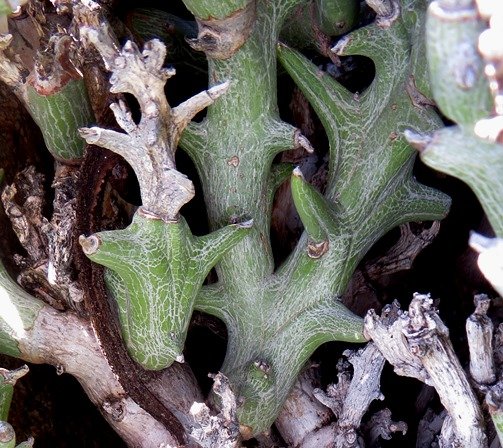Euphorbia hamata stems

Euphorbia hamata stems are worth a photo or two. Much branching brings about compact, busy growth and interesting shapes.
This restricts access into the shrub to only smaller animals living in the sparse veld of the plants habitat. These kind of facilities constitute decent accommodation as well as protection for such tenants.
The hard branches bear no spines although at first glance the large conical tubercles might suggest otherwise. The plant’s protective strategy resides in its dense, ungiving stem toughness. Stems become 6 mm to 13 mm in diameter.
Persistence of tubercle tips and stem sections that die off is evident in the photo. Parts dry out as moisture rationing dictates the sacrificial sequence of what should last longer. This ensures overall plant survival better, given the fluctuating resource levels at given times around here.
It also suggests a Soviet-like, tough central control. But there is no centre here where any entity might take note of dying parts or make board room type decisions about matters of growth and production.
What is physically retained at extremities serves in first defence lines against intruders, whether breaking or eating might be the intention of such parties.
Curious lines like mythical route maps of watercourses or roads existing nowhere are present upon the smooth green stems in picture. Probably the effects of ageing like the onset of grey hair (Frandsen, 2017; Smith and Crouch, 2009; Le Roux, et al, 2005; iNaturalist; http://llifle.com).

